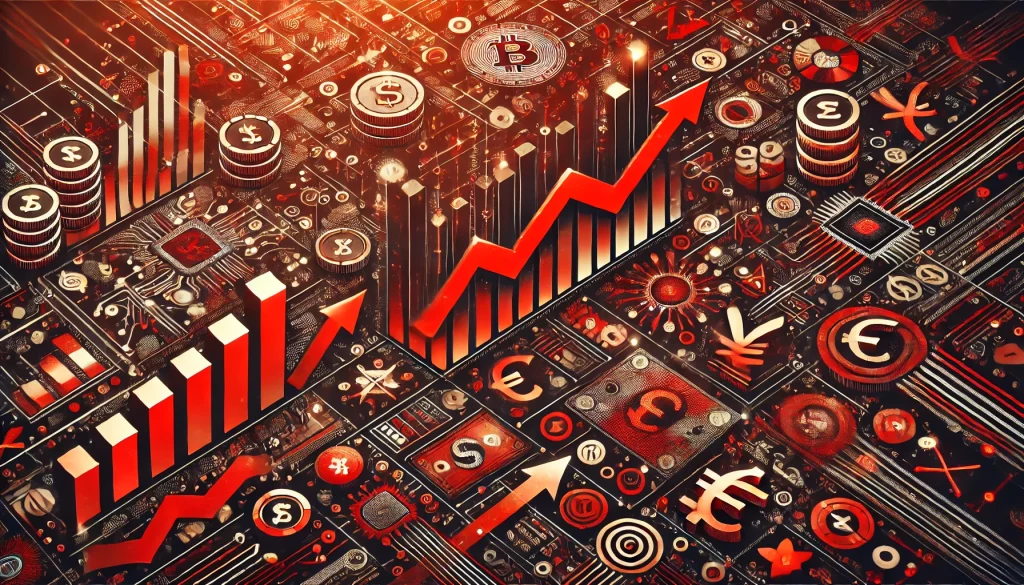Introduction
Inflation in 2024 is a major concern for businesses and consumers alike as rising prices and economic uncertainty shape global markets. This review explores the impact of inflation in 2024, focusing on how it will affect various sectors and how new technologies are being utilized to mitigate these challenges. This analysis will help you understand the current economic environment and the strategic approach needed to navigate through these turbulent times.

Overview
Inflation in 2024 has reached a level that demands the attention of businesses and policymakers. The economic environment is driving businesses to adopt innovative solutions due to the rising cost of goods, services, and raw materials. Key technologies such as artificial intelligence, digital platforms, and automation are playing a pivotal role in combating inflationary pressures. Businesses are leveraging these tools to streamline operations, reduce costs, and maintain price competitiveness in a volatile market.
Pros and cons
Pros

- Technology-driven solutions: The introduction of advanced technology has enabled businesses to respond more effectively to inflationary pressures. Automation and AI-driven tools have increased efficiency and reduced operational costs.
- Adaptability: Businesses are becoming more agile, adapting their strategies to counter inflation by implementing cost-saving technologies and optimizing their supply chains.
- Economic resilience: Technological advances are mitigating the effects of inflation, helping businesses remain profitable despite rising costs.
Cons

- Implementation costs: The initial investment required to adopt a new technology can be prohibitively high, especially for small and medium-sized enterprises (SMEs).
- Market uncertainty: While technology provides solutions, inflation and the unpredictability of market conditions can still pose significant risks, making it difficult to plan for the long term.
- Digital divide: Not all businesses have equal access to advanced technology, which can widen the gap between large and small businesses.
Deep dive analytics

The role of technology in fighting inflation
The adoption of digital technologies plays a critical role in mitigating the effects of inflation. Automation and AI have transformed business operations, enabling companies to operate more efficiently with less human intervention. For example, cloud-based platforms enable real-time data analysis, helping companies make informed decisions quickly. These technologies are especially useful in manufacturing and IT services, where precision and efficiency are critical.
Economic adaptation
Inflation has forced companies to rethink their pricing strategies and supply chain management. Businesses are increasingly relying on data analytics to forecast demand and manage inventory effectively. In addition, companies are renegotiating contracts and exploring alternatives to minimize costs. The adaptability of businesses to inflationary pressures demonstrates the importance of flexible strategies and innovative solutions to remain competitive.
Market impact
The ripple effects of inflation are being felt across a wide range of industries, with some being impacted more than others. For example, IT services and manufacturing have seen significant cost increases, leading to higher consumer prices. However, companies that have embraced technology have been able to mitigate this impact to some extent, highlighting the critical role of innovation in today’s economic environment.
Compare
If you compare the current inflationary environment to past recessions, you’ll see that technology is playing a much more important role today. In the past, companies relied heavily on traditional cost-cutting measures like layoffs and production cuts, but in 2024, the focus is on leveraging technology to maintain operational efficiency and manage costs. This approach will not only help companies survive, but also position them for growth in a difficult economic environment.
Inflationary impact and technology adoption
| Lateral | Impact of inflation | The role of technology |
|---|---|---|
| Operational costs | Increase | Reduce through automation |
| Market uncertainty | High | Manage with data analytics |
| Competitiveness | Threatened | Boost your competitive edge with innovation |
Conclusion
Inflation in 2024 presents significant challenges, but also opportunities for those willing to adapt. The adoption of new technologies has proven to be a game-changer for businesses, allowing organizations to navigate economic uncertainty with greater resilience. While the upfront costs of implementing these technologies can be high, the long-term benefits in terms of efficiency and cost control are undeniable. Businesses that embrace innovation are likely to grow stronger, more competitive, and better able to cope with future economic fluctuations.
Evaluation
4 of 5 – Inflation is a challenge, but strategic use of technology provides a powerful toolset to mitigate its impact.
FAQ
How will inflation affect small businesses in 2024?
Inflation increases operating costs, making it harder for small businesses to stay profitable. However, adopting cost-effective technology can help mitigate some of this impact.
Can technology fully counteract inflation?
Technology can significantly reduce the impact of inflation by improving efficiency and reducing costs, but it can’t completely eliminate inflationary pressures.
What are the risks of not adopting new technology in times of inflation?
Businesses that don’t embrace new technologies can suffer from increased operating costs and a loss of market share compared to tech-savvy competitors.
See also
- Burton, I. (2024). Navigating 2024: Overcoming inflation and embracing new tech. LinkedIn. Retrieved, https://www.linkedin.com/pulse/navigating-2024-overcoming-inflation-embracing-new-tech-ian-burton-tfg0c/
- Morton, M. (2024, August 30). Technology inflation rate edges up for storage, IT services. TechTarget. https://www.techtarget.com/searchcio/news/366563340/Technology-inflation-rate-edges-up-for-storage-IT-services
- SAP. (n.d.). How to deal with inflation. SAP Insights. https://www.sap.com/sea/insights/how-to-deal-with-inflation.html
- Morgan Stanley. (2024). Technology and inflation: How businesses can navigate a new landscape. https://www.morganstanley.com/ideas/technology-and-inflation-businesses
- Infor. (2024). How digital technologies help manufacturers combat rampant inflation. Retrieved from https://www.infor.com/resources/digital-technologies-help-manufacturers-combat-rampant-inflation
